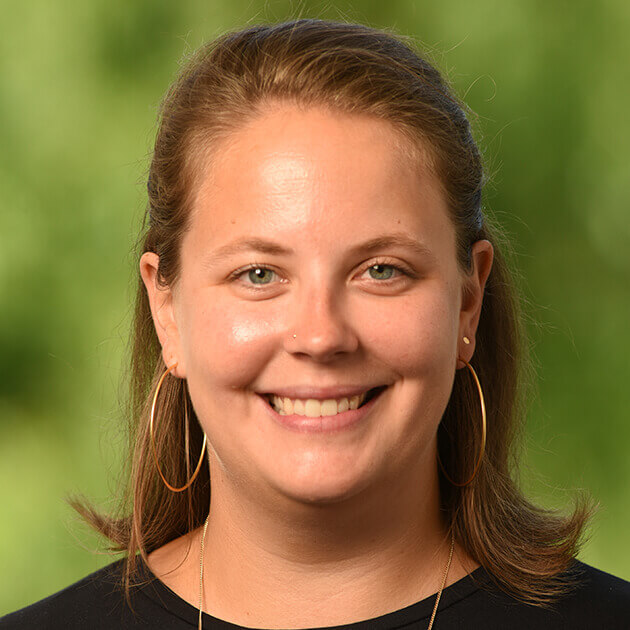News
Brooklyn Museum Educators Bring Afrofuturism to US Assembly
Poly’s History Department welcomed partners from Brooklyn Museum for an Upper School Black History Month assembly on Feb. 19. The focus was Afrofuturism, a contemporary movement of African American, African, and Black writers, artists, and musicians that “explores the relationship between Blackness and technology through analyzing histories and imagining futures.”
Afrofuturism has been described as a cultural aesthetic combining elements of science fiction, magical realism, and African history. The term was first used in critic Mark Dery’s 1994 essay, “Black to the Future,” which considered why there were so few Black science fiction writers.


Maggie Moslander, Chair of the History Department, introduced Kelsey Goldman and ray ferreira, educators from Brooklyn Museum. History teacher Bre’Lynn Lombard facilitated the assembly about Black History, which was shared as a webinar. In this assembly, the guests from the Brooklyn Museum used Afrofuturism as a lens to look at Black History.
To begin, ray, who is senior Instructor/ Guided Gallery Visit Coordinator at the museum, said that it was important to acknowledge that the Brooklyn Museum is located on Lenapehoking, land that was historically inhabited by the Lenape people. She said that in the discussion they would “speak from our own experience” and “create a brave space” for that discussion. They would be discussing a work, “Entropia,” by artist Julie Mehretu. First, she led students in a writing exercise. “Picture your favorite window,” she said. “Fast forward to tomorrow, then years from now.” She invited students to do a writing exercise, to use their senses and to “write what you notice.” She suggested two books about Afrofuturism for further reading: Akwaeke Emezi‘s debut novel Freshwater and Nnedi Okorafor’s Lagoon. She also quoted science fiction writer Octavia Butler, known as the mother of Afrofuturism, as saying in a 2000 essay, ”All I did was look around at the problems we’re neglecting now and give them 30 years to become full-fledged disasters.”
Why is Afrofuturism important? We can use Afrofuturism as a lens, ray said. Afrofuturism can also be used to understand the world, reexamine history, and imagine a new world, she said.

Then, ray showed the students Mehretu’s 2014 work “Entropia.” “What do you notice about the artwork?” she asked. Students commented that it looked like a weather map, was very colorful, and seemed to show “chaos.”
“What would it feel like to be in this place?” she asked the students to imagine. In the Chat feature, they commented, “vibrant,” “freeing,” “lively,” and a “sense of floating.”
“How would you transform it to feel like home?” she asked them to imagine New York City in the future.
Then, ray invited the students to return to the writing they had begun at the start of the assembly.

Afterward, William Ling-Regan ’24 reflected, “I had not studied Afrofuturism before this assembly, but I thought the idea was really interesting to explore. I was especially interested by the idea of intersection, and how Afrofuturism is the intersection of Black culture and history with technology and science fiction. When I think about the genre of science fiction, the majority of the characters that come to mind are white, so I think it’s important to read and view works that place people of color at the center of stories about the future.”
About “Entropia,” he said, “From looking at the painting shown in the assembly, I realized that any artwork can illustrate themes and narratives of Black history, whether or not this depiction is explicit or intentional. While the painting we looked at was abstract, I could still see connections to Black history through the discussions we had and the emotions people described in response to the painting.”
“It is my hope that students would, ‘surrender to the air’ that they would get a glimpse into the imagination that has fueled Black excellence for centuries.”
Afterward, Bre’Lynn Lombard said, “We are and have been inundated with images that capture the brutalities and pain of Black life. Unfortunately, historical and present day narratives perpetuate these images. As a result, our knowledge of Blackness becomes skewed. Inviting the Brooklyn Museum to Poly to engage our students in Afrofuturism, its goal to see Black life as one that is liberated and miraculous and beautiful and bold, was easy. It is my hope that students would, ‘surrender to the air’ that they would get a glimpse into the imagination that has fueled Black excellence for centuries. I hope students would walk away with an understanding of what it means to imagine in the midst of chaos and how individual imagination helps liberate the whole.”
For more about Afrofuturism, please check out this article!



